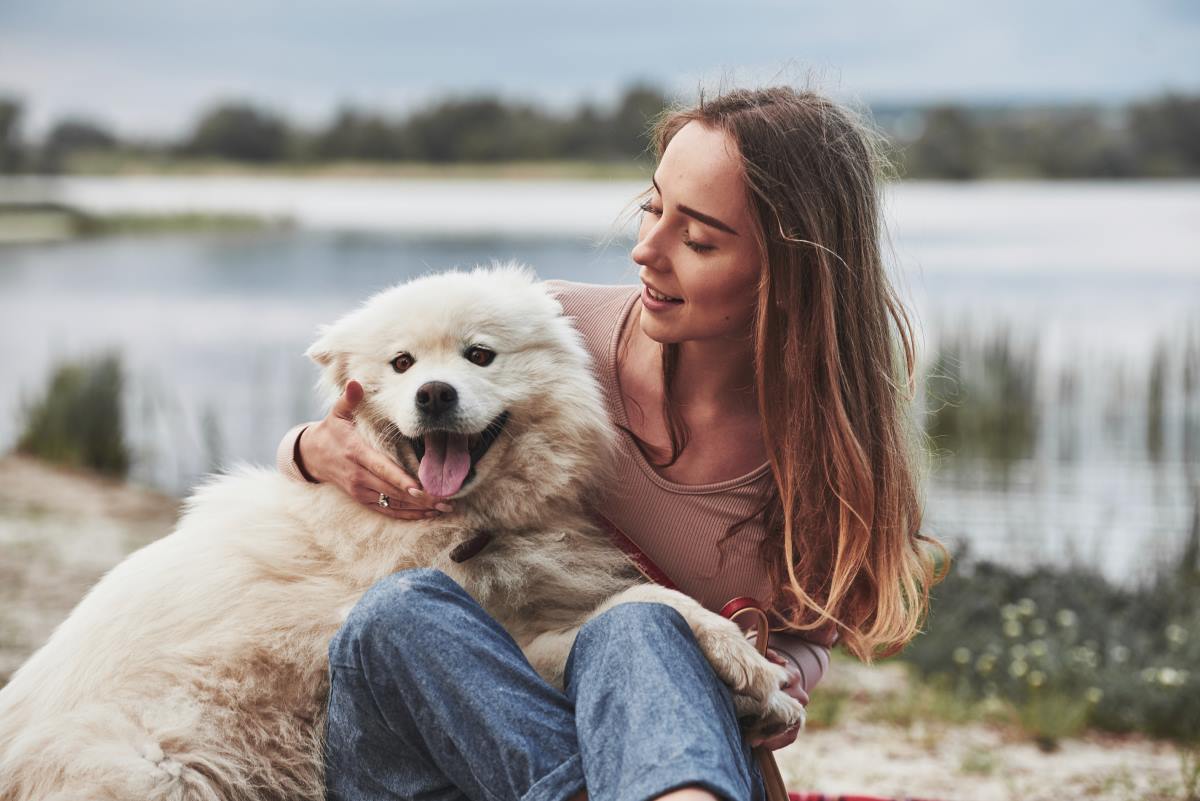Get Pet Insurance for your Cat & Dog

Zero
Documentation
Quick
Claim Process
Affordable
Premium
Terms and conditions apply*
- {{species}}
- {{indoorOutdoor}}
- {{suminsured}}
Great Pyrenees Dog Breed Characteristics & Information

Great Pyrenees dogs are a substantial breed of dogs with double coats. They are the perfect example of strength along with elegance. Apart from their fantastic appearance, Great Pyrenees dogs are brilliant. Their patience helps them survive the cold on mountain tops.
Scroll down to learn more about the Great Pyrenees dogs, their characteristics and how to care for this breed.
What is the History of Great Pyrenees Dogs?
Great Pyrenees dogs are one of the oldest breeds of dogs who were mainly bred to protect the livestock as a guardian dog. However, they were also used as herding dogs by the mountain farmers.
Great Pyrenees were initially confined to the Great Pyrenees mountains between France and Spain. King Louis XIV brought this majestic dog to his court because of its beauty and elegance.
What are the Characteristics of Great Pyrenees Dogs?
Some of the characteristics of the Great Pyrenees dog are:
- Lifespan: Like any medium-sized dog, the Great Pyrenees have a lifespan of 10 to 12 years.
- Height: Male Great Pyrenees are 27 to 32 inches tall, while females are 25 to 29 inches tall.
- Colour: Great Pyrenees have several coat colours, such as tan, white, grey, and red.
- Weight: Male Great Pyrenees weigh up to 100 pounds on average, whereas females weigh up to 85 pounds.
- Temperament: Great Pyrenees are known for being very gentle, intelligent, and affectionate with their family members when appropriately trained.
- Energy Level: Great Pyrenees are moderately energetic and can be kept fit and healthy with regular short walks.
What are the Common Health Problems in Great Pyrenees Dogs?
Some of the common health problems faced by the Great Pyrenees dogs are:
- Bloating: Bloating or Gastric Dilatation-Volvulus is a life-threatening condition in these dogs. In this, the stomach of your Great Pyrenees fills with gas and may get twisted. It is especially seen in deep-chested dogs, and the symptoms include restlessness, a distended abdomen, and signs of pain upon touching the belly.
- Osteosarcoma: Osteosarcoma, or bone cancer, is an excruciating condition typically seen in large breeds such as the Great Pyrenees. It clinically manifests as swelling in the concerned area or persistent lameness that shows no improvement on treatment.
- Hip Dysplasia: Hip dysplasia is one of the most common health problems in large dogs like these. Great Pyrenees suffer from malformation of the hip joint, which results in discomfort and arthritis over time. Early diagnosis and regular treatment may help.
- Patellar luxation: This condition involves the dislocation of the kneecap or patella. It is generally hereditary and manifests clinically as sudden lameness, unusual sitting posture, and intermittent skipping. The condition can be managed with specific lifestyle changes and physical rehabilitation therapy.
- Osteochondritis Dessicans: Osteochondritis Dessicans, or OCD is a disease of the cartilage that affects various joints of the body. It mainly affects the shoulder joint but can also be seen in the hips or knees. Trauma, genetics, and imbalanced nutrition are known to be some of the factors of OCD.
- Heart Problems: Great Pyrenees might suffer from subaortic stenosis, an inherited disease characterised by an obstruction or lesion near the aortic valve. Affected dogs should not be used for breeding. Great Pyrenees may also develop cardiomyopathy.
- Neuronal Degeneration: Neuronal degeneration has only been seen in the Great Pyrenees. It affects the central and peripheral nervous system and is generally diagnosed in puppies aged 4 to 6 months. Symptoms include muscular weakness and ataxia in the rear.
How to Take Care of Great Pyrenees Dogs?
Some tips to take care of your Great Pyrenees are:
- Grooming
Because of their elegant coat, the Great Pyrenees are high-maintenance. They are heavy shedders who shed all year round, more during the fall and spring. Hence, brushing them 2 to 3 times per week is very important. However, you should only shave a Great Pyrenees if it is required for medical reasons.
- Socialisation
The Great Pyrenees are excellent companions. However, they must socialise with the outer environment and other dogs to not become excessively protective of their family. Owing to this, they often bark and drive off every stranger that comes their way.
- Food and Diet
Providing high-quality food is crucial to caring for your Great Pyrenees. However, providing quality food doesn’t mean overdoing treats; they should make up only 10% of calorie intake. Their meal should contain a lot of protein such as meat, bone, offal, etc.
- Exercise
Exercise is crucial for keeping the mind and body active in dogs. Great Pyrenees are large dogs but are not overly energetic. Hence, walking for 30 to 60 minutes daily is enough for them. This will prevent obesity, which can lead to other health conditions.
The Great Pyrenees is the perfect choice for those who have already dealt with guarding dogs. One of the most important things you must remember is proper training and socialisation. Also, spend lots of time with them and shower them with affection to make them feel loved.












